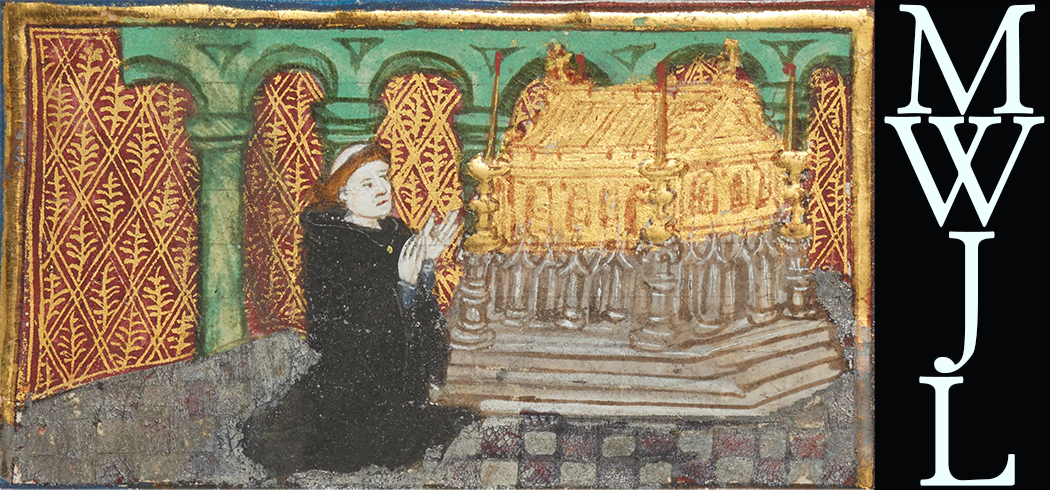 Quis Dabit Meo Capiti Fontem Lacrimarum:
Long Melford Verses
Quis Dabit Meo Capiti Fontem Lacrimarum:
Long Melford Verses
HomeAbout the ArchiveAbout John LydgateWorksManuscriptsAbout this ManuscriptEditorial ApparatusContactVisualization
Notes
-
The remnants of the third letter of the first word, and the split finishing stroke to its right makes clear that the first four letters are “mank.” However, it cannot be determined if the letter following the “k” would be a “y” or “i,” making the remaining spelling ambiguous. The remnant of an ascender hooting to the left, however, makes it clear that the third word is “made” and not “maad.” ↩
-
The “or” of the initial word can be seen, as can the suspension mark between the “a” and “n” in the second. Likewise, the terminal “n” in the third word can be seen as well as the ascender for the “h” and the slightly lower point of the split finishing stroke of “t” prior. The space between the remnants of the initial three letters of the word and the final four suggests “y” rather than “i,” making the spelling “leuyathan.” This spelling is common in the fifteenth century. ↩
-
The terminal “s” in the third word is provided based on the manuscript witnesses and the remains of “hy” present. Likewise, the remains of the “y” in the fourth word can be seen, which when combined with the remnants of the descenders for “p” and “h” later in the line and the “es” ending provides enough context to state the spelling of the word. Likewise, the “st” in the fifth word is taken from the initial “mo” and the provided context. ↩
-
The remnant of the suspension mark may be seen above the the “y” in the initial word. Likewise, the remnant of the tittle for the “i” in the final four letters of the line can be seen. This fits the manuscript witnesses, making the likely word “precious.” However, since the fourth letter could be a “c” or “s,” it remains ambiguous. The initial letter in the seventh word must have a tall ascender based on the remnants on the panel, and the manuscript witnesses make the most likely letter “b.” However, the remainder of the particular spelling cannot be determined from what remains. ↩
-
The initial three letters are taken from the manuscript witnesses. The tall ascender with hook on the fourth word, when combined with the top of the remaining minims, provides “for.” There is unfortunately not enough of the remains of the final word to determine spelling, although based on the “st” ligature and the remnant of the “t’s” otiose mark at the bottom of the line the word is likely to have been some form of “poust.” ↩
-
The crossbar indicating “a” rather than “o” can be seen in the second word on the panel, as can the ascender of “h” and the descender of “y” in the third. The ascender of “h” can be seen in the fourth word, and the remaining minims indicate “his.” The tittle for the initial “i” in the fifth word can be seen, as can the terminal “all,” and the rest is provided by reference to the word elsewhere in the chapel and the manuscript witnesses. ↩
-
The line here is badly damaged, but many of the unique letter forms can be discerned. The “r,” “st” ligature, and “e” of the second word can be seen, and the initial letter is taken from context. The descender of the “y” in the second word, the portion of the first two minims in the “m,” and the remnants of the suspension mark barely visible indicate “myn.” The remnant of the “a” and position of the descender on the “y” in the sixth word indicates that a single, rather than two “l’s” are present. The lack of an otiose mark for “t” and the remaining finishing strokes indicates the end of the line, and the “s” beginning the fourth word and finishing the fifth suggests that the expected words are there. Spelling for that section was determined via reference to elsewhere in the chapel, as the words do not shift spelling there. ↩






